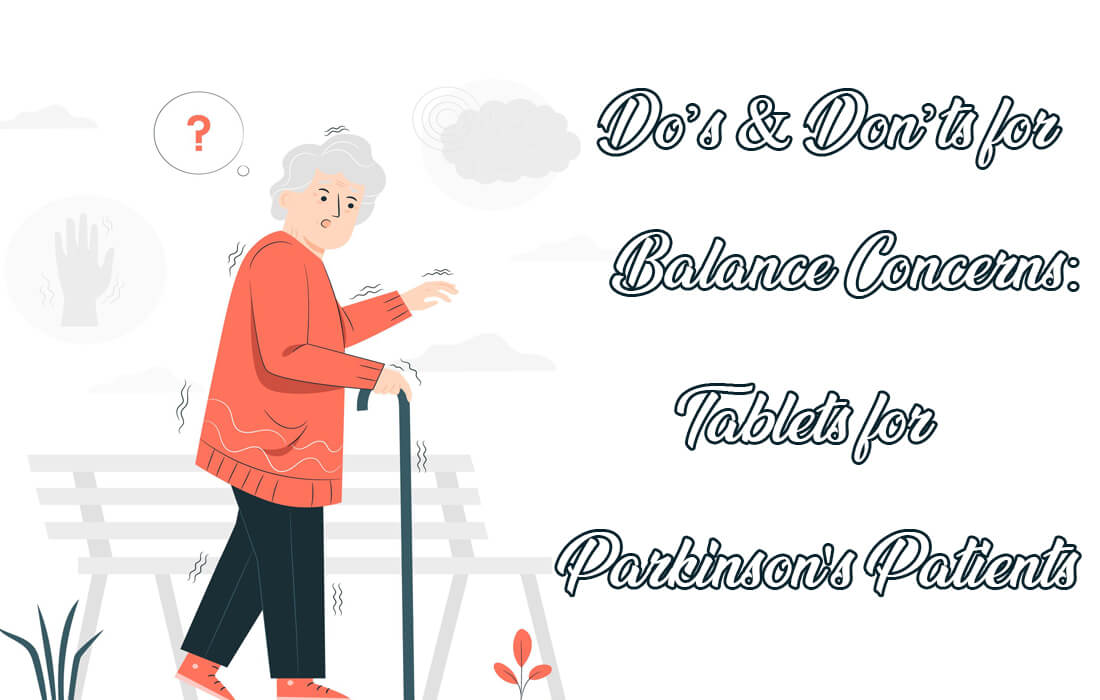Parkinson’s disease, a progressive neurodegenerative disorder, presents individuals with unique challenges that can significantly impact their daily lives. This article is designed to provide extensive advice on handling Parkinson’s disease. It includes aspects like early diagnosis, effective tablets for parkinson’s patients, lifestyle decisions, emotional health, and ensuring a safe home environment.
Do’s:
1. Seek Early Diagnosis and Expert Guidance:
- Parkinson’s symptoms, such as tremors, stiffness, and balance issues, may be subtle initially. Seeking the best tablet for Parkinson’s disease is crucial for an accurate diagnosis and timely intervention.
2. Incorporate Regular Exercise:
- Exercise is a cornerstone of Parkinson’s management. Participate in a comprehensive fitness regimen encompassing aerobic exercises, strength training, and activities to enhance balance.
- Walking, swimming, cycling, and tai chi have positively affected symptom control and overall well-being.
3. Embrace a Healthy Diet:
- A diet that strikes a balance with antioxidants, vitamins, and minerals supports overall health and could aid in promoting better stability for those managing Parkinson’s.
4. Establish a Support System:
- Building a strong support network is vital. Family, friends, and fellow individuals with Parkinson’s can offer understanding, encouragement, and practical assistance.
- Participate in local or online support groups to share experiences, coping strategies, and valuable insights.
5. Prioritize Mental Health:
- Managing the emotional impact of Parkinson’s is crucial for overall well-being. Stress management techniques, mindfulness practices, and engaging in hobbies contribute to mental health.
6. Adapt Living Spaces:
- Modifying the home environment enhances safety and accessibility. Install handrails, ramps, and non-slip flooring to reduce the risk of falls.
- Regularly reassess the home for potential hazards and adjust to accommodate changing mobility levels.
Don’ts:
1. Ignore Symptoms or Delay Diagnosis:
- Neglecting early symptoms or delaying a diagnosis can impede timely intervention and optimal disease management.
- Procrastination may lead to irreversible damage, making early diagnosis critical for better outcomes.
2. Sedentary Lifestyle:
- A sedentary lifestyle exacerbates Parkinson’s symptoms and negatively impacts overall health.
- Find enjoyable ways to stay active, considering individual abilities and preferences. Regular movement is essential for maintaining flexibility and strength.
3. Neglect Nutritional Needs:
- Unhealthy eating habits or extreme diets without professional guidance can lead to nutritional deficiencies.
4. Isolate Yourself:
- Mitigate the effects of social isolation on depression and anxiety by staying socially connected with family, friends, and the community to promote mental and emotional well-being.
- Being active in support groups nurtures a sense of community and mutual understanding.
5. Underestimate the Importance of Mental Health:
- Parkinson’s can have a significant impact on mental health. Ignoring emotional challenges or neglecting mental health care is detrimental.
6. Overlook Home Safety Measures:
- Neglecting to adapt to the living environment can result in preventable accidents and injuries.
- Proactively assess and modify the home to ensure safety, incorporating features like handrails and adequate lighting to reduce the risk of falls.
Conclusion
Effectively managing Parkinson’s disease requires a multifaceted approach that addresses lifestyle and emotional aspects. The dos and don’ts outlined in this article provide a roadmap for individuals with Parkinson’s to navigate their journey with confidence and resilience. Embracing early diagnosis, prioritizing parkinson’s disease treatment tablets, adopting a healthy lifestyle, and nurturing emotional well-being are integral components of a comprehensive Parkinson’s management plan. By staying informed and actively engaging with healthcare professionals, individuals can optimize their quality of life and face the challenges of Parkinson’s with greater empowerment.

